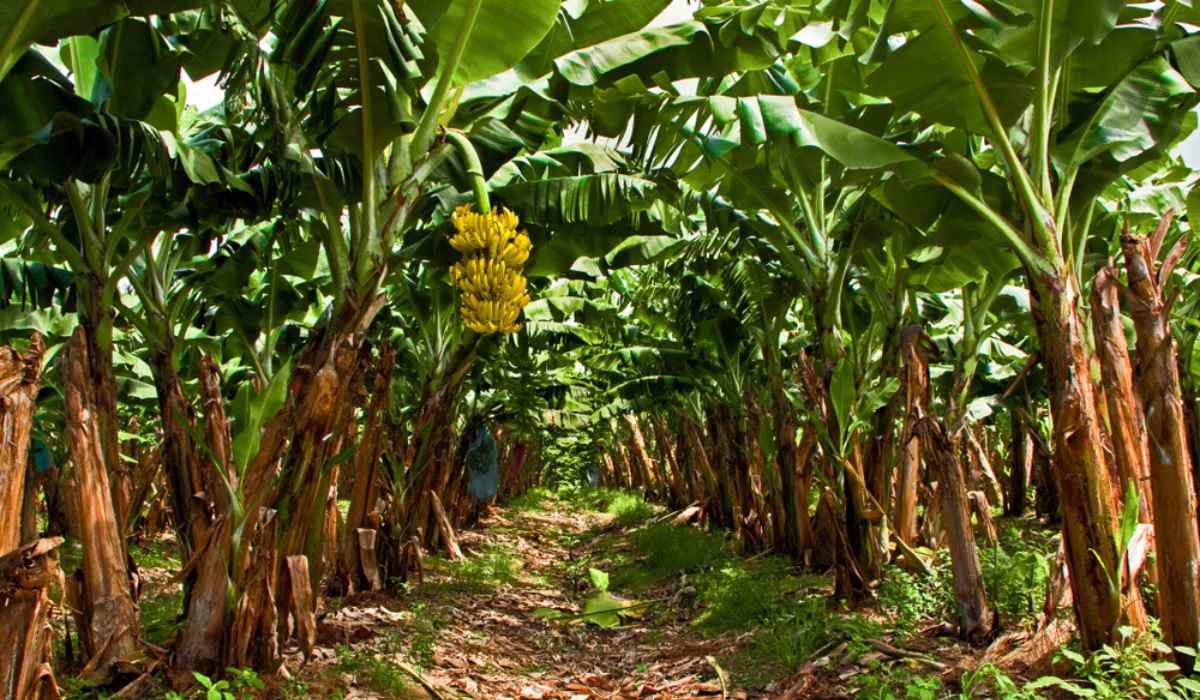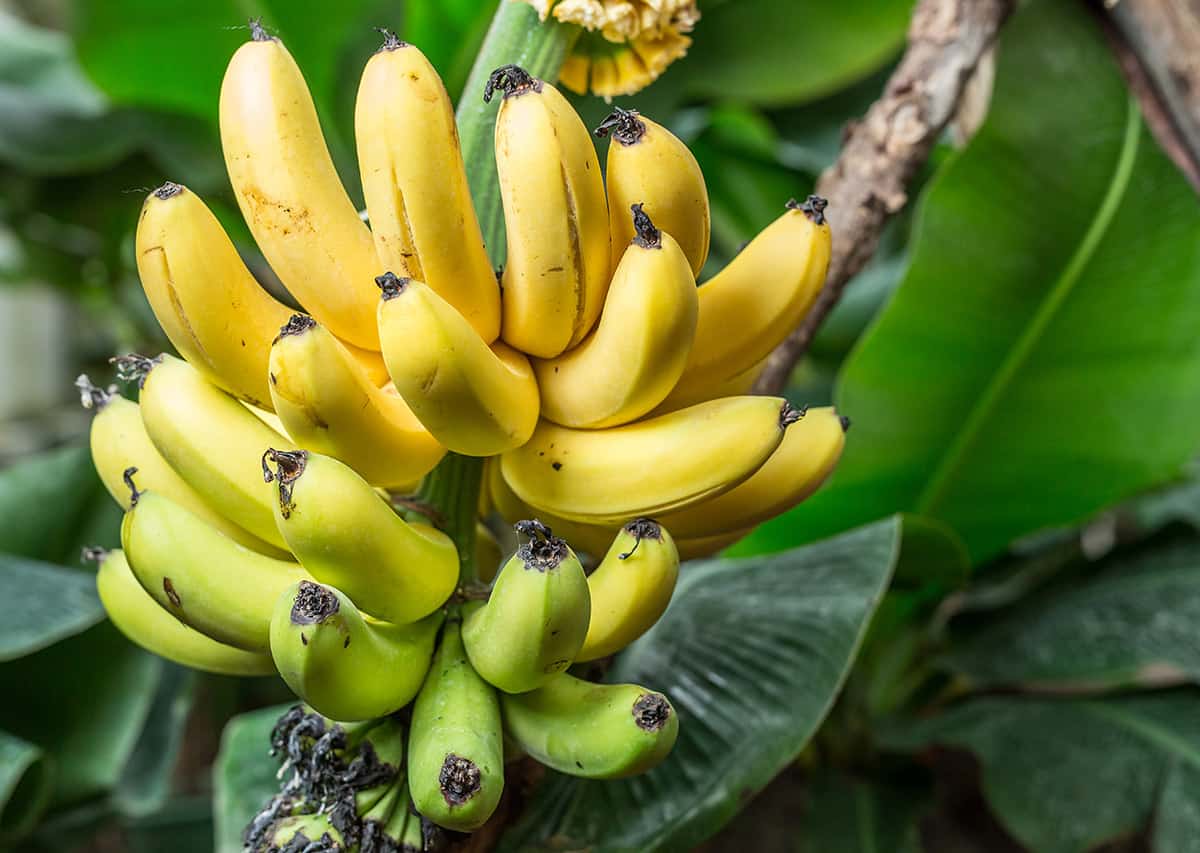Choosing the Right Banana Variety for Your Climate
When it comes to learning how to grow a banana tree, selecting the right variety is crucial for success. With over 500 types of banana plants, choosing the best one for your region’s climate and growing conditions can be overwhelming. However, by understanding the different types of banana plants, you can make an informed decision and set your tree up for optimal growth. Dwarf banana varieties, such as the ‘Dwarf Cavendish‘ or ‘Super Dwarf’, are ideal for small spaces and containers, while standard varieties like the ‘Gros Michel‘ or ‘Lady Finger’ are better suited for larger areas with more space to grow. When selecting a variety, consider factors such as temperature tolerance, humidity requirements, and resistance to disease. For example, if you live in an area with frequent frosts, you’ll want to choose a variety that is cold-hardy, such as the ‘Ataulfo’ or ‘Plantain’. By choosing the right banana variety for your climate, you’ll be well on your way to growing a thriving banana tree.
Preparing the Ideal Soil and Container for Your Banana Tree
When learning how to grow a banana tree, it’s essential to provide the right environment for the roots to thrive. A well-draining soil and a large enough container are crucial for a banana tree’s root system to develop properly. A potting mix specifically designed for tropical plants, with a pH between 5.5 and 6.5, is ideal for banana trees. To create a suitable potting mix, combine 1 part peat moss, 1 part compost, and 1 part perlite. This will provide the necessary drainage and aeration for the roots. When choosing a container, select one that is at least 12-14 inches deep and 2-3 times wider than the root ball of the banana tree. This will give the roots enough room to grow and support the tree’s growth. By providing the right soil and container, you’ll be setting your banana tree up for success and ensuring it receives the necessary nutrients for healthy growth.
How to Plant a Banana Tree: A Beginner’s Guide
Once you’ve selected the right banana variety and prepared the ideal soil and container, it’s time to learn how to grow a banana tree by planting it correctly. Planting a banana tree is a straightforward process, but it requires some care to ensure the roots develop properly. Start by gently removing the banana tree from its container, taking care not to disturb the roots. If the roots are wrapped in burlap, remove the burlap and any string or wire that may be constricting the roots. Place the banana tree in the container, making sure the rhizome (the thick stem that produces the roots) is level with the soil surface. Fill in the soil around the roots, gently firming it in place as you go. Water the soil well to settle it around the roots. Finally, water the banana tree thoroughly, making sure the soil is moist but not waterlogged. By following these steps, you’ll be giving your banana tree the best start in life and setting it up for healthy growth.
Providing Optimal Light and Temperature Conditions
When learning how to grow a banana tree, it’s essential to provide the right light and temperature conditions for healthy growth. Banana trees require bright, indirect light to photosynthesize and produce energy. A location with 12-14 hours of indirect sunlight per day is ideal. However, direct sunlight can cause the leaves to become scorched, so it’s essential to provide some shade, especially in warmer climates. In terms of temperature, banana trees thrive in temperatures between 75°F and 85°F (24°C and 30°C). Temperatures below 60°F (15°C) can cause growth to slow, while temperatures above 90°F (32°C) can lead to heat stress. By providing the right light and temperature conditions, you’ll be giving your banana tree the best chance to grow and thrive. Remember, understanding how to grow a banana tree requires attention to detail, and getting the light and temperature right is a crucial step in the process.
Watering and Humidity: The Key to a Healthy Banana Tree
When it comes to learning how to grow a banana tree, watering and humidity are crucial factors to consider. Banana trees require consistent moisture to thrive, especially when they’re producing fruit. Aim to water your banana tree when the top 1-2 inches of soil feel dry to the touch. Overwatering can lead to root rot, so it’s essential to strike the right balance. In terms of humidity, banana trees prefer a humid environment with a relative humidity of 50-70%. You can increase the humidity around your banana tree by placing the pot on a tray filled with water and pebbles or using a humidifier. By maintaining the right level of moisture and humidity, you’ll be providing your banana tree with the ideal conditions to grow and thrive. Remember, understanding how to grow a banana tree requires attention to detail, and getting the watering and humidity right is a critical step in the process.
Fertilizing Your Banana Tree for Maximum Growth
Fertilizing is a crucial step in learning how to grow a banana tree. Banana trees are heavy feeders and require regular fertilization to promote healthy growth and fruit production. A balanced fertilizer with a ratio of 10-10-10 (nitrogen-phosphorus-potassium) is ideal for banana trees. Apply the fertilizer every 2-3 weeks during the growing season, and once a month during the dormant season. You can also use organic fertilizers like compost or manure tea, which provide slow-release nutrients and improve soil health. Additionally, consider using a fertilizer specifically formulated for fruiting plants, as it will provide the necessary nutrients for fruit production. By fertilizing your banana tree regularly, you’ll be providing it with the necessary nutrients to grow strong and healthy, and ultimately, produce delicious fruit. Remember, understanding how to grow a banana tree requires attention to detail, and fertilizing is a critical step in the process.
Pruning and Training Your Banana Tree for Optimal Fruit Production
Pruning and training are essential steps in learning how to grow a banana tree. Pruning helps to promote healthy growth, increase fruit production, and maintain the overall shape of the plant. To prune your banana tree, remove any dead or damaged leaves and flowers, as well as any suckers that grow from the base of the plant. Suckers can divert energy from the main plant and reduce fruit production, so it’s essential to remove them regularly. Training your banana tree involves providing support for the plant as it grows. You can use a stake or trellis to keep the plant upright and encourage it to grow towards the sun. By pruning and training your banana tree regularly, you’ll be able to promote healthy growth, increase fruit production, and enjoy a bountiful harvest. Remember, understanding how to grow a banana tree requires attention to detail, and pruning and training are critical steps in the process.
Troubleshooting Common Problems with Your Banana Tree
When learning how to grow a banana tree, it’s essential to be aware of common problems that may arise and know how to troubleshoot them. One of the most common issues is pests, such as aphids, whiteflies, and spider mites. To combat pests, use organic pest control methods like neem oil or insecticidal soap. Another common problem is diseases, like fungal infections and bacterial wilt. To prevent diseases, ensure good air circulation, remove infected leaves, and treat the plant with fungicides. Nutrient deficiencies can also occur, causing yellowing leaves or stunted growth. To address nutrient deficiencies, adjust your fertilization schedule and consider using a balanced fertilizer. Additionally, banana trees may experience environmental stressors like extreme temperatures, drought, or overwatering. To mitigate these issues, monitor your plant’s response to environmental changes and adjust your care routine accordingly. By being proactive and addressing common problems, you can ensure your banana tree remains healthy and thrives. Remember, understanding how to grow a banana tree requires attention to detail and a willingness to troubleshoot common issues that may arise.







